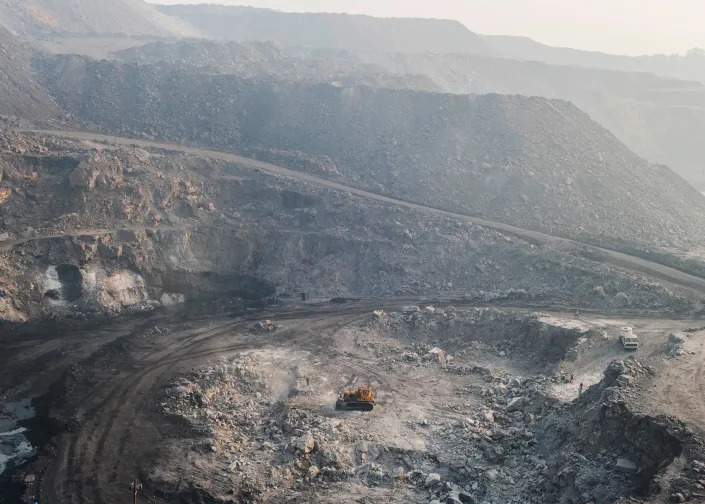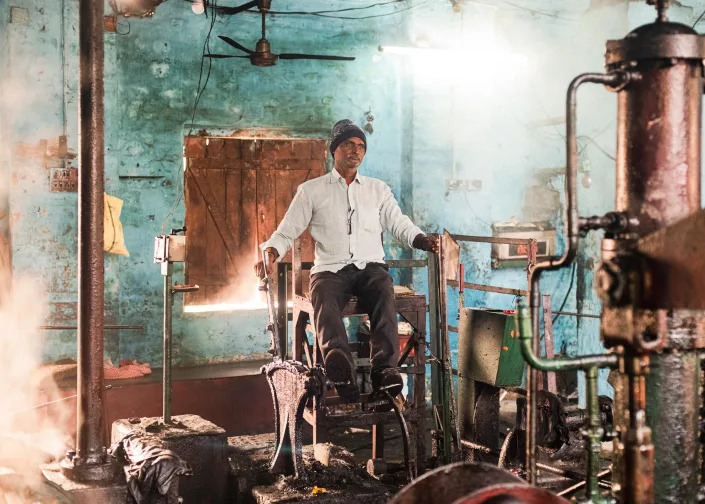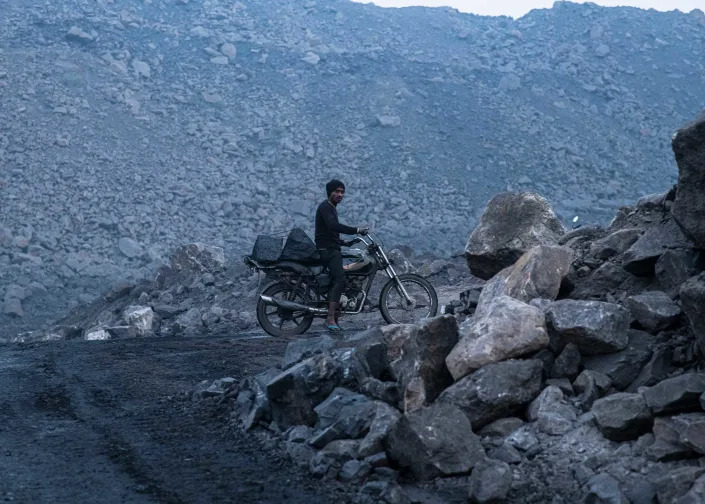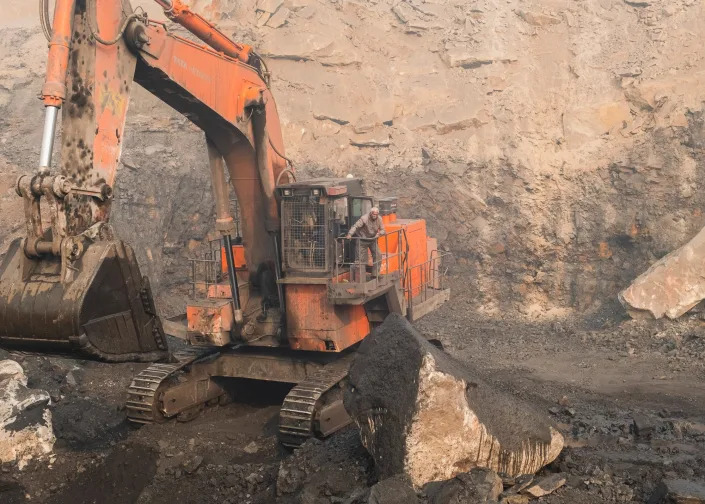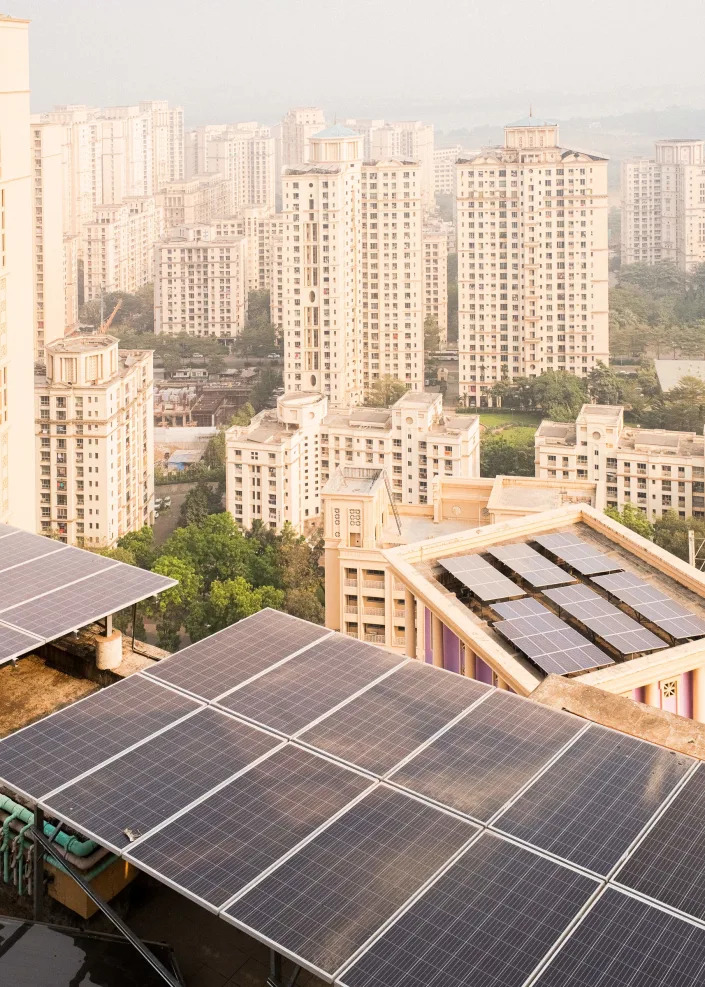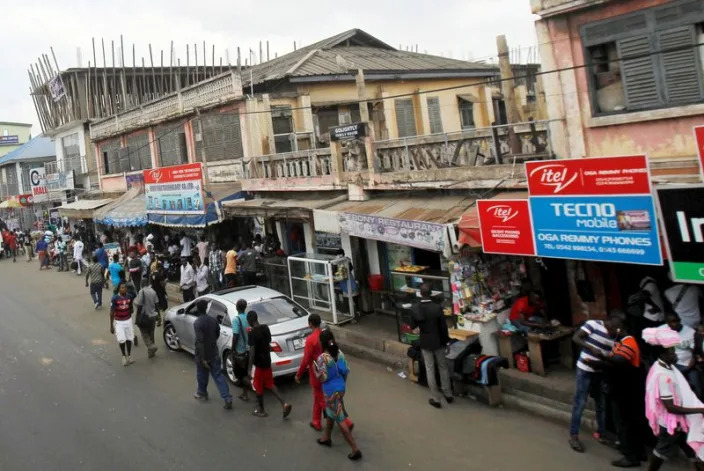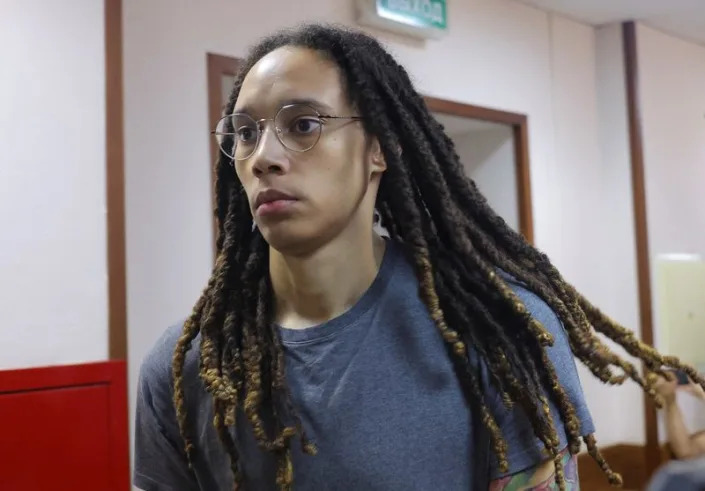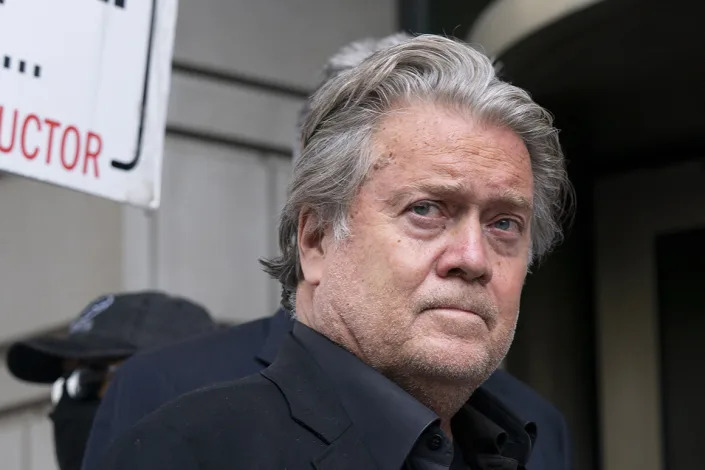
Jose Luis Magana/AP Photo
Danielle Muoio Dunn
Thu, January 12, 2023
NEW YORK — The state criminal trial against former Trump adviser Steve Bannon over his alleged involvement in charity fraud has been delayed by his refusal to speak to his team of attorneys.
Bannon and his Florida-based nonprofit, We Build the Wall, is charged with defrauding donors who gave money to construct a barrier along the Mexico border. In September, Attorney General Tish James said Bannon raised more than $15 million through the scheme and used the proceeds to “enrich himself and his friends.” He faces a maximum of five to 15 years in prison if convicted.
During a Thursday appearance in Manhattan Supreme Court, Bannon’s attorneys said they no longer communicate directly with their client due to “irreconcilable differences” over how to approach the case. Bannon has reached out to at least seven law firms in the past several weeks to find new representation, according to his current counsel.
“There has been a direct breakdown in communication,” said David Schoen, one of Bannon’s three outgoing lawyers who appeared in court Thursday.
Bannon, who has pleaded not guilty, entered the lower Manhattan courtroom Thursday voicing support for protesters in Brazil who falsely claim the results of the presidential election were rigged.
“Those are freedom fighters down there,” Bannon said.
Inside the courtroom, prosecutors complained that Bannon’s refusal to engage with his legal team has already caused procedural delays, but said they wouldn’t fight the request for new representation. State Supreme Court Judge Juan Merchan gave Bannon until Feb. 28 to find new attorneys.
A similar set of federal charges were brought against Bannon, 68, and three other people in the Southern District of New York in August 2020. He was arrested while onboard a luxury yacht off the coast of Connecticut and later pleaded not guilty, but was dropped from the case after receiving a pardon from then-President Donald Trump. Presidential pardons do not apply to state charges.
Steve Bannon Delays Trial by Ghosting His Own Lawyers
Jose Pagliery
Thu, January 12, 2023
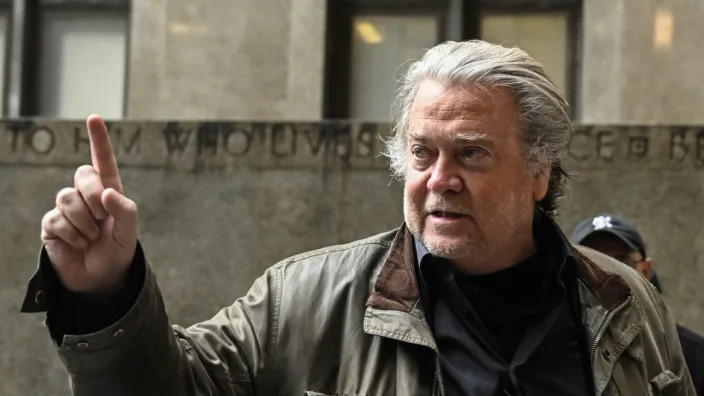
Photo by Fatih Aktas/Anadolu Agency via Getty Images
Lawyers revealed in court on Thursday that far-right media figure Steve Bannon has, for months now, ghosted his legal team—a tactic that has managed to slow down the New York case against him for his role in a scammy nationalist nonprofit that falsely promised to build a U.S.-Mexico wall.
On Thursday, even the state judge overseeing the case called Bannon out on the bald-faced delay tactic. But Justice Juan Merchan relented and still gave Bannon seven weeks to find new attorneys.
Bannon now has until Feb. 28 to find new lawyers to replace the ones he now scorns—like David Schoen, whose spectacular failure in federal court last year led Bannon to a conviction for contempt of Congress in another case.
In court in New York City on Thursday, the judge sparred with Schoen, who tried to help his client by hitting the brakes on the prosecution while arguing that Bannon doesn’t even have to provide a good reason for cutting him off.
Steve Bannon Cheers on Brazilian ‘Freedom Fighters’ Trying to Recreate Jan. 6
“There is a direct breakdown in communications, so Mr. Bannon and his lawyers don't communicate about this case directly,” Schoen revealed.
But Merchan saw through that defense strategy, citing legal precedent that makes clear a person can pick their own lawyer but not use that to setback a prosecution.
“Although a defendant has the constitutionally guaranteed right to be defended by counsel of his own choosing, this right is qualified in the sense that a defendant may not employ such right as a means to delay judicial proceedings,” Merchan read from a 1980 state appellate case.“Is this being done to delay official proceedings?” Merchan asked Schoen. Bannon’s lawyer demurred.
The courtroom soon devolved into a heated match, as the cool-headed judge had no patience for Schoen’s usual theatrics and lectures. At one point, Merchan cut off Schoen mid-sentence and ordered him and other lawyers to approach the bench for a private discussion—one that clearly ended badly.
As they walked away from the judge, Merchan scoffed.
"I'm sorry you feel like you were dragged into this courthouse," the judge said sarcastically. "You and your client will be treated the same as any other defendant in this courthouse."
Steve Bannon Gets Four Months in the Slammer as Judge Shreds His Defense
Bannon, a former banker and current right-wing media personality, advised former President Donald Trump and spent half a year as his White House chief strategist. Since then, he’s been mired in legal troubles stemming from his conspiracy-driven, anti-democratic activities. The Senate Intelligence Committee wanted him investigated by the feds over what they thought was his untruthful testimony about Russian interference in the 2016 election to get Trump into power. The Department of Justice successfully prosecuted him in July for his refusal to testify before the House Jan. 6 Committee investigating his role in fomenting the attack on the U.S. Capitol in 2021 by Trump-loyal insurrectionists.
Bannon briefly faced federal charges for lining his own pockets by scamming MAGA diehards into funding a doomed GoFundMe project to build a wall between the United States and Mexico to keep out migrants. But Trump pardoned his friend and made the case go away.
The New York County District Attorney’s Office has been selectively reviving cases that conveniently disappeared during the Trump administration, and in September, the office announced a grand jury indictment against Bannon for that same case. This time, however, the case uses state charges against Bannon for duping New Yorkers into funding the wall. Bannon is accused of lying about the $15 million collected for “We Build The Wall,” and he was criminally charged with money laundering, scheme to defraud, and conspiracy.
On Thursday, prosecutors and defense lawyers argued over evidence in the case. Justin S. Weddle, who represents the “We Build the Wall” nonprofit, complained about how the DA’s office had turned over too much information, drowning them in documents that couldn’t possibly be reviewed in time for a trial.
Bannon’s lawyers, Schoen of Alabama and John W. Mitchell of New York, used it as an opportunity to try and detach themselves from the case. But Merchan wouldn’t let them, refusing to let any person charged with a crime in his courtroom remain “without counsel.”
Bannon Found Guilty of Obstructing Jan. 6 Probe
Mitchell pleaded to be let go, saying that the way Bannon will only talk to him through a third person “is indeed the most awkward situation,” stressing that “we're not providing effective assistance of counsel.”
But Merchan wouldn’t have it, forcing them to stick around for now and setting a strict deadline for Bannon to find new lawyers.
Dan Passeser, an assistant district attorney prosecuting the case, warned that the right-wing media personality was undermining the law enforcement effort by “seeking to hit pause indefinitely” with his lawyer swapping games.
“There will be delay. The extent of delay we'll have to wait and see,” the judge acknowledged.
In recent weeks, Merchan has proved to be less and less tolerant of the utter incompetence and obstruction of justice that has become commonplace in the era of Trump politics. During the Trump Organization’s tax fraud trial last month, he ripped into corporate defense lawyers for wasting time and unsealed documents showing how the company slowed down the investigation by lying. And on Tuesday, while sentencing Trump Organization finance executive Allen Weisselberg, Merchan berated him over the greedy way he cheated taxes and faked business records.
Steve Bannon has ghosted his 'We Build The Wall' defense lawyers for months in what prosecutors call a delay tactic
Jacob Shamsian, Laura Italiano
Thu, January 12, 2023

Former White House Chief Strategist Steve Bannon enters the restroom as he leaves the New York State Supreme Court after a hearing in New York City, U.S. January 12, 2023.
Steve Bannon was in Manhattan court Thursday for a hearing in his border wall charity scam case.
His lawyers told the judge that Bannon has refused to talk to them for months.
Bannon now has a deadline and an ultimatum: Choose new lawyers in 6 weeks or keep your current ones.
Right-wing agitator Stephen Bannon has been ghosting his defense lawyers in his "We Build The Wall" charity scam case for months, those lawyers said in a court appearance in Manhattan state court Thursday.
Prosecutors and the judge presiding over the case complained in court that Bannon's ongoing refusal to speak directly to his previously-chosen legal team risks delaying the case, which has sputtered along in the months since his September arraignment on charges of money laundering, conspiracy, and scheme to defraud.
David Schoen, one of Bannon's current lawyers, asked the judge to let him and another lawyer, John Mitchell, stop representing Bannon immediately.
The judge instead gave a typically rumpled-looking Bannon a deadline and an ultimatum: Either chose new lawyers before his next court date on February 28, or return to court with his current ones.
If Bannon persists in not getting a new legal defense team one may be appointed for him by the judge.
Bannon, who served as a 2016 campaign official and top White House advisor to Donald Trump, is facing six charges brought by the Manhattan district attorney's office, including money laundering and conspiracy.
Prosecutors allege he helped orchestrate a scheme through a nonprofit that claimed to be raising private funding to build a wall on the US-Mexico border.
The nonprofit raised $15 million from thousands of donors across the country with the false promise of building the wall as envisioned by former President Donald Trump, prosecutors said in a September indictment. In reality, prosecutors said, Bannon and others laundered funds through third-party entities to line the pockets of people running the organization.
'A direct breakdown in communications'
Bannon has pleaded not guilty to the charges. He walked into the courtroom in downtown Manhattan Thursday wearing his typical getup of a waxed olive jacket layered over a black button-down shirt, which was layered over a black polo shirt, along with tuxedo pants.
At the court conference, Schoen told Judge Juan Merchan that Bannon was no longer speaking with him or Mitchell. Both asked without success to be allowed to withdraw from the case.
"There has been a direct breakdown in communications," Schoen said, calling their differences over defense strategy "irreconcilable."
Since September, Schoen said, Bannon has only communicated with him and Mitchell through a third attorney, Adam Katz. Katz didn't show up to the Thursday hearing.
Despite their stated communication breakdown, Schoen and Bannon whispered to and smiled at each other while seated at the defense table only moments later, as a lawyer representing the wall-building fundraiser discussed discovery issues with the judge.
After the hearing, Schoen told Insider that he and Mitchell disagreed with Bannon about what defense to make, and how to prepare for the case.
"It's cordial — we're very friendly," Schoen said. "We just disagree about the case."

Former White House Chief Strategist Steve Bannon points as he leaves New York Supreme Court after a hearing in New York City, U.S., January 12, 2023
Prosecutors didn't oppose Schoen and Mitchell's attempts to withdraw from the case, but opposed delaying the case's schedule — a point the judge ultimately agreed with.
"The law gives the court great discretion to move a case along in the public interest," Merchan said.
Merchan said the Manhattan District Attorney's office should "set aside" discovery evidence for whichever lawyers Bannon hired. He also allowed letters that were previously submitted to the court by Bannon's current lawyers, and which lay out their disagreements with Bannon, to remain under seal.
In August 2020, federal prosecutors in Manhattan brought a similar set of fraud charges against Bannon and three other people who they said had misused funds from the nonprofit to enrich themselves. But then-President Trump pardoned Bannon shortly before he left office.
Trump didn't pardon Bannon's three codefendants in the federal case, who were referred to as unindicted coconspirators in the Manhattan district attorney's indictment. Two pleaded guilty to their role in the scam, and the third was found guilty at trial.
Bannon was found guilty in July of contempt of Congress for defying subpoenas issued by the panel investigating the January 6, 2021 attack on the Capitol. A Washington, DC, federal judge ordered him to serve four months in prison, but Bannon has staved off the sentence as he appeals the verdict.
On his way into the courthouse Thursday, Bannon was met by a small group of protesters demanding he be jailed for his role in the Capitol attack. As he left, he was heckled by a lone protester.
If Bannon's conviction in DC is upheld, it could weigh against him if he's also found guilty in the border-wall case, as the judge would be able to consider his criminal history.
The judge overseeing the case, Merchan, recently oversaw a trial in which the Trump Organization was found guilty of tax fraud. He's scheduled to sentence the company on Friday.
.gif)
